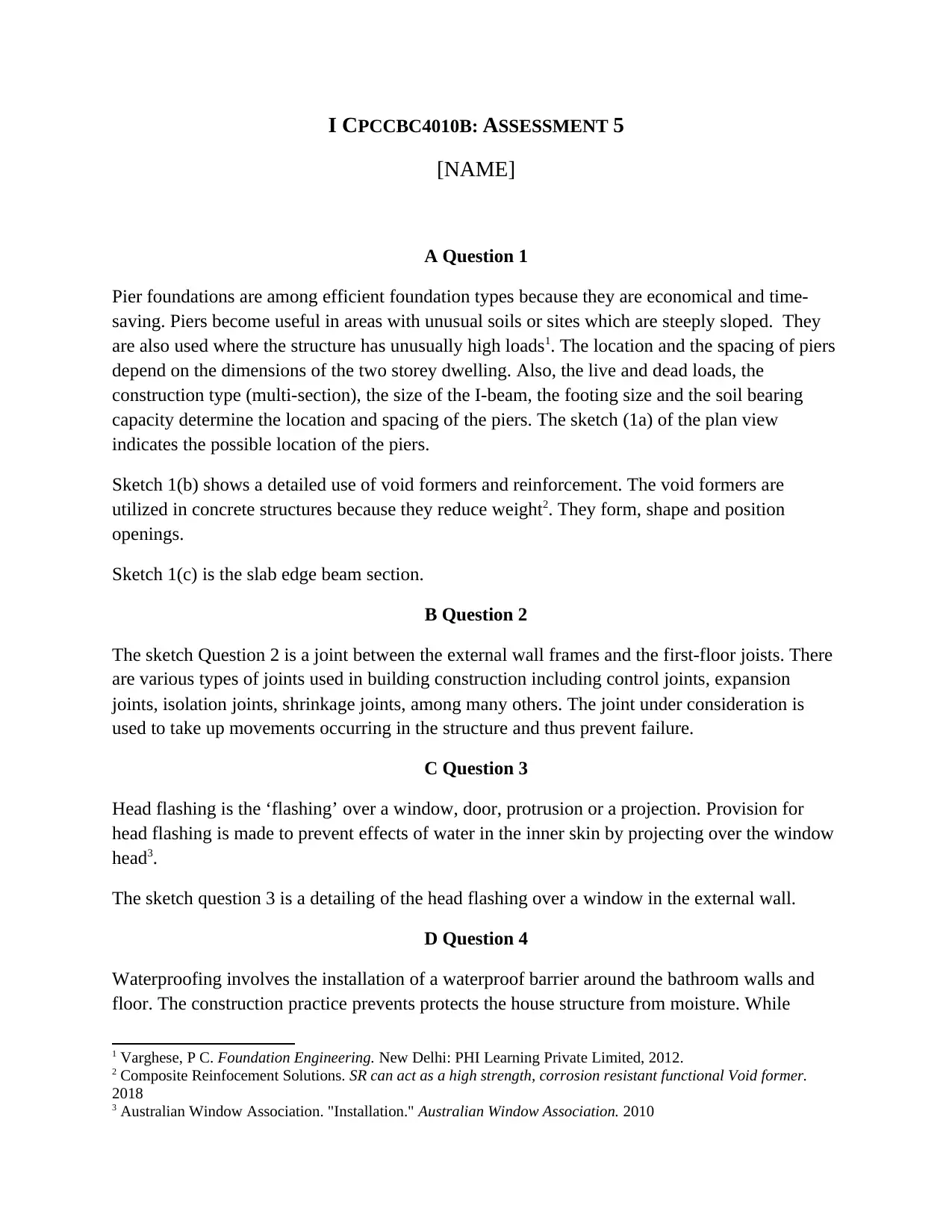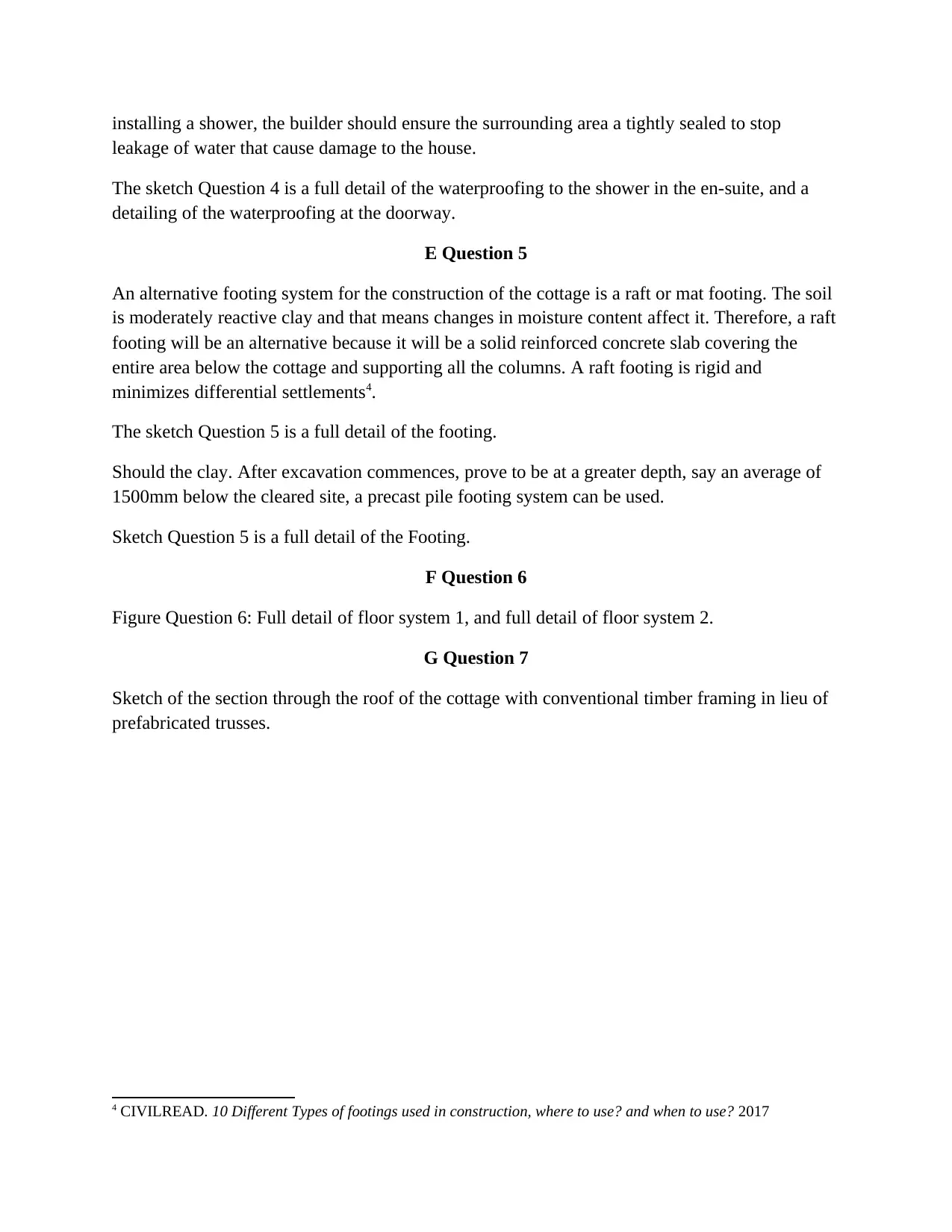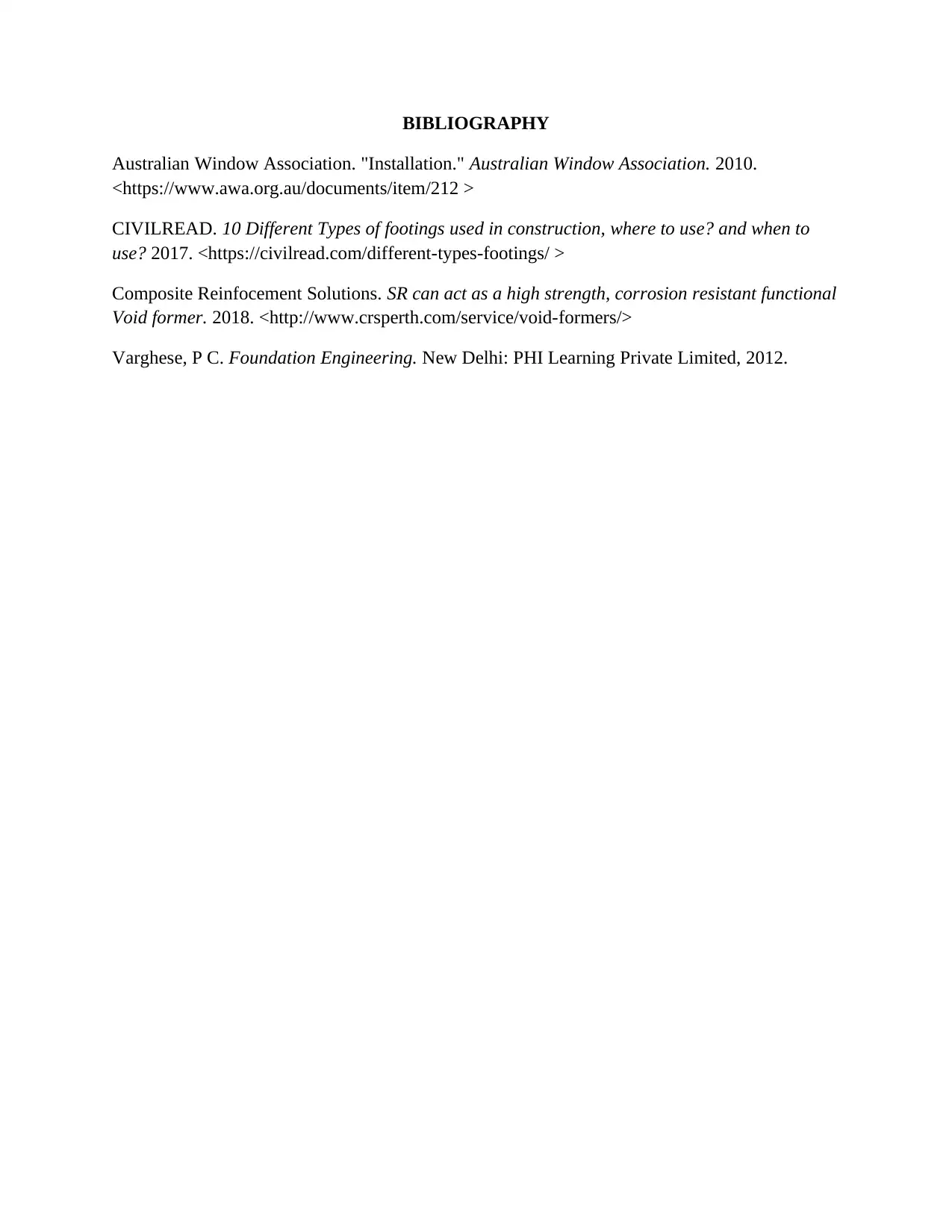CPCCBC4010B: Detailed Building Construction Homework Assignment
VerifiedAdded on 2021/04/17
|3
|653
|145
Homework Assignment
AI Summary
This assignment solution for CPCCBC4010B provides a detailed analysis of various building construction elements. It covers the design and application of pier foundations, considering factors like soil conditions and structural loads. The document also explores different joint types used in building construction, focusing on their role in accommodating movement and preventing structural failure. Furthermore, it delves into the importance of head flashing for weatherproofing, detailing its application over windows. Waterproofing techniques for bathrooms and shower areas are discussed, emphasizing the need for proper sealing to prevent water damage. The solution also presents alternative footing systems, like raft footings, for reactive clay soils, and addresses the use of precast pile footing systems in specific scenarios. Finally, the assignment provides details on different floor systems and roof framing. The solution includes references to relevant industry standards and resources.
1 out of 3









![[object Object]](/_next/static/media/star-bottom.7253800d.svg)